Affiliate disclosure: This post may contain affiliate links. Please see our Privacy Policy.
Arnica salve is a soothing and anti-inflammatory herbal remedy, perfect for supporting circulation, relieving pain from sore muscles, and providing moisture for dry, cracked skin.
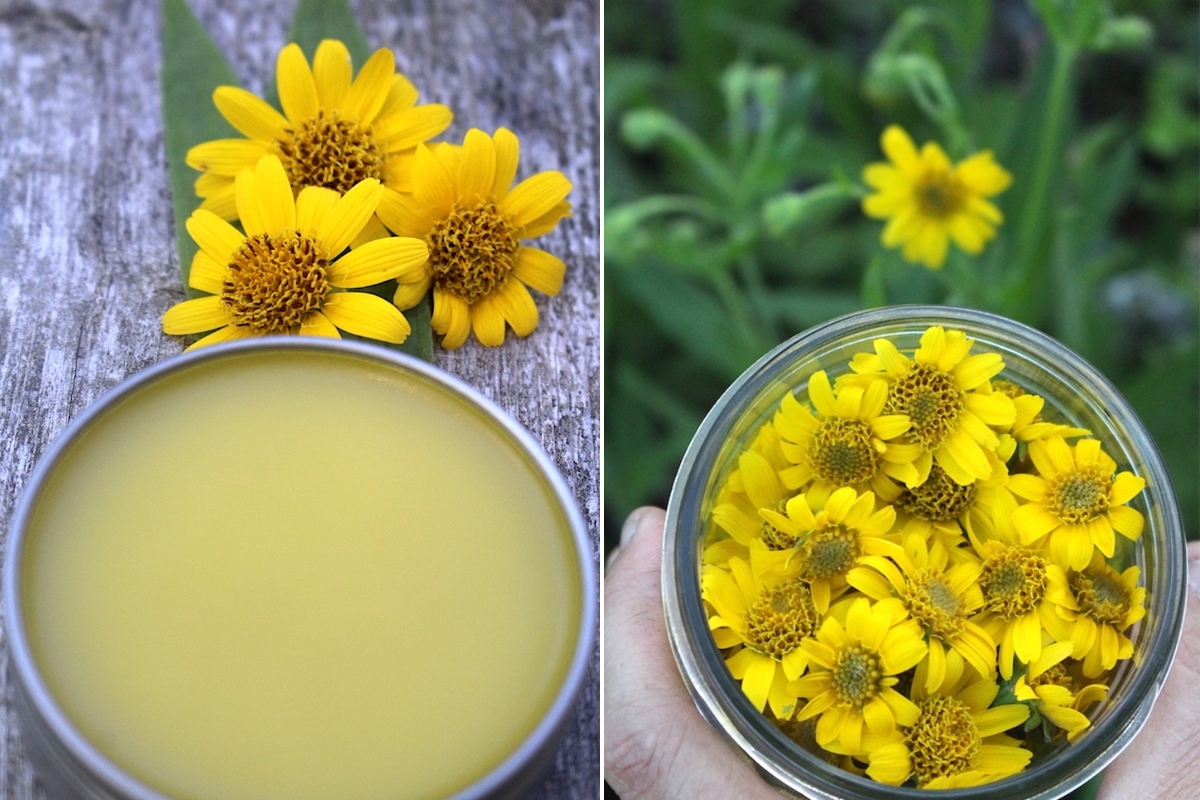
Arnica (Arnica spp.) is a genus of cheerful perennial flowers in the sunflower family. There are several species of arnica that are native to or have naturalized in North America. Just be aware when foraging that some native species like Heartleaf arnica (A. cordifolia) and Common leopardbane (A. acaulis) are endangered in some areas. Heartleaf arnica is incredibly important to native wildlife. Experts estimated that in its native range, the US Rockies and Canada, it makes up 24% of the summer diet of deer and elk.
Even though it grows wild, I still love growing it in wildflower patches and herb gardens. Arnica attracts various pollinators, including moths, butterflies, bees, and other insects. It also grows well in less-than-ideal conditions, tolerating patches of our property with unimproved, acidic soil. Mountain arnica (Arnica montana) is the most popular species for cultivation and herbal medicine.
However, arnica’s use as a beautiful wildflower comes second to its medicinal value. On the surface, arnica is incredibly useful for skin care. It’s one of my favorite herbs for winter as it helps soothe dry, chapped, and cracked skin from cold, snowy winter days on the homestead and evenings by the fire.
Arnica’s anti-inflammatory and soothing properties go deeper, too. It’s an excellent herb for sore muscles, bruises, swelling, and osteoarthritis. It may help to alleviate pain and other symptoms related to these conditions.
If you’d prefer ready-made arnica and want to skip the DIY portion, you can find some great small-scale herbalists on Etsy who offer hand-crafted arnica salve.
While arnica grows in the wild, you can also grow it in your medicine garden. A small local seed company here in Vermont called Earthbeat Seeds carries arnica. They also include it in their Medicine Garden Collection, which is great for budding herbalists.
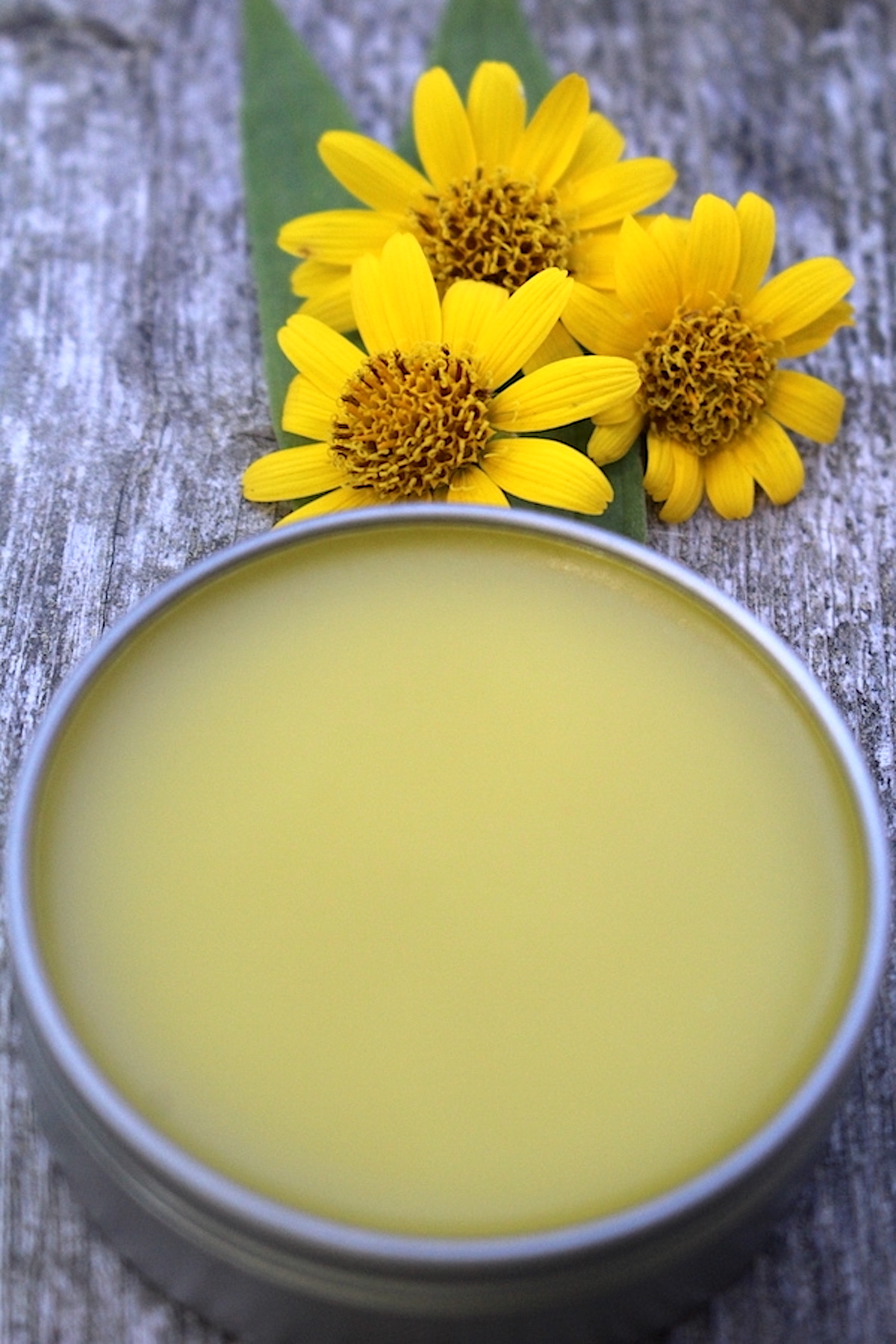
(Always consult your doctor or a clinical herbalist before trying a new herb. There’s always a possibility of unintended side effects, interactions with medications, and allergic reactions. If you’re harvesting herbs from the wild, be 100% certain of your identification and consult multiple sources for identification information. Arnica has many lookalikes. The following information and recipe is based on my personal experience and research. I don’t have any qualifications to advise you about your health. Please consult professional healthcare providers, do your own research, and check with multiple resources. Arnica is safest when used externally. According to United Plant Savers, overdosing on arnica, particularly internally, can cause shortness of breath, increased blood pressure, heart damage, organ failure, comas, and even death.)
What is Arnica?
Arnica is a genus of perennial herbaceous plants in the sunflower or daisy family. Twenty-seven arnica species grow in the United States today. Many are native, but other species came with colonists and have naturalized here.
Depending on the species, arnica may reach 4 inches to 3 feet tall, and it usually has unbranched stems. Each plant has a basal rosette of leathery, ovoid leaves and oppositely arranged, downy leaves along the stem. Arnica shares the sunflower’s showy, good-sized yellow or orange, daisy-shaped flowers.
A good identifying feature to keep in mind is the plant’s aroma. The flowers don’t have a very distinct smell, but when you rub or crush a leaf on a mature plant, it should release a distinct sage- or pine-like fragrance.
Arnica grows in nearly every US state and much of Canada. The ideal habitat varies with species and may include partial shade to full sun. Their water needs vary widely, but most species grow best in acidic, sandy, nutrient-poor soil like those found in meadows and the edges of coniferous forests.
You can use the flowers from any arnica species to create topical preparations for soothing dry skin and alleviating the pains and swelling associated with osteoarthritis, bruises, sprains, and sore muscles.
Traditionally, people used arnica internally, but today, herbalists only use it externally. Arnica is not edible, and studies have shown that internal use can cause a range of issues, from stomach pain to severe illness and comas. For this reason, many herbalists also avoid using arnica on open wounds.
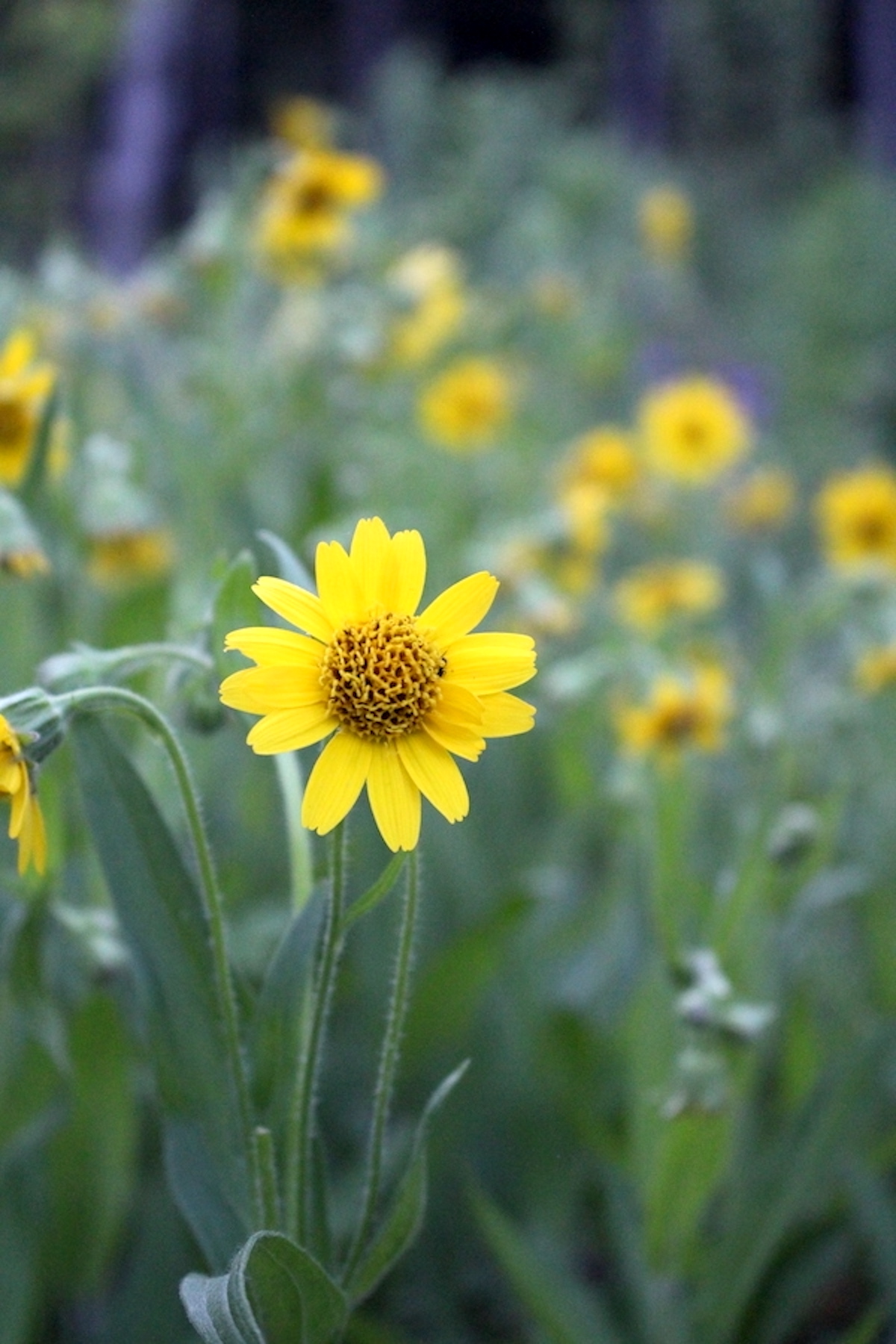
Benefits of Arnica Salve
In European folk medicine, we know that people have been using arnica in Germany since the 1500s, much in the same way it is today, to treat inflammation, skin lesions, bruises, and blunt injuries. Native Americans also undoubtedly used arnica for hundreds of years before European contact. Reportedly, some groups used Heartleaf Arnica and other species to treat sore throats, toothaches, and bruises.
Modern herbalists and researchers primarily focus on the plant’s topical use as an ointment or salve. One promising study indicated that arnica ointment may be as effective at alleviating osteoarthritis pain as ibuprofen ointment. A group of 174 patients with osteoarthritis of the hands were treated with arnica or ibuprofen ointment and examined with a pain and hand function scale.
Another study looked at treating bruises with arnica ointment. In the study, researchers created small bruises on the upper arms of healthy participants between 21 and 65 years old. They then treated the bruises for 14 days with either 20% arnica gel, 5% vitamin K, a combination of 1% vitamin K and 0.3% retinol, or a placebo. After 14 days, the arnica ointment group showed significantly less bruising than the combined or placebo group.
It’s worth noting that both of these studies used potent arnica ointments. Studies on homeopathic remedies containing diluted arnica have not shown the same benefits.
One reason I may make my own arnica and other healing herbal salves is to ensure that my salve contains high amounts of good-quality ingredients. I find I reach for arnica most for dry, chapped winter skin and back pain. In my experience, it’s wonderful for soothing the skin and loosening tight, sore muscles.
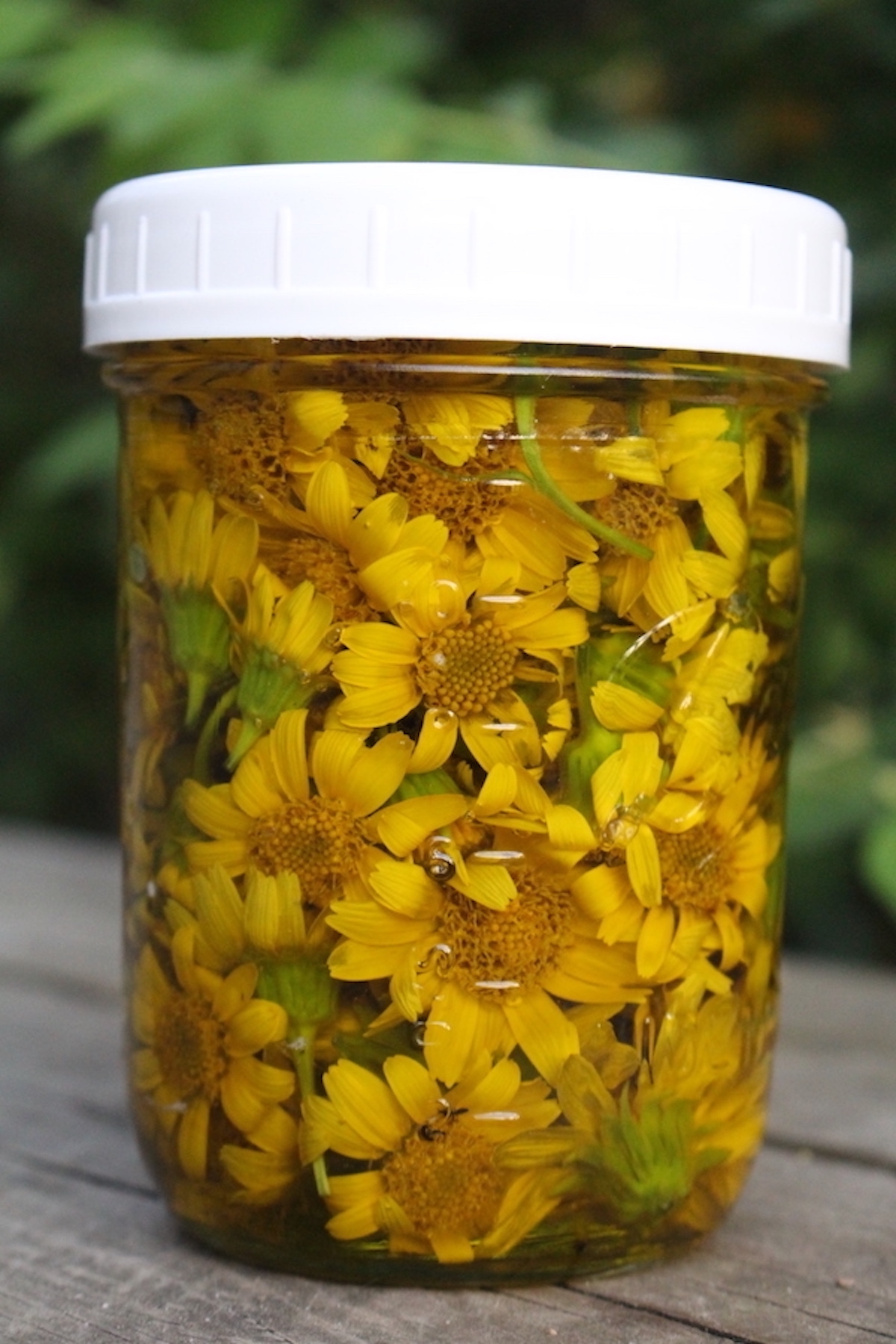
Supplies & Equipment
Thankfully, making salve at home is easy. You just need a few basic supplies and ingredients.
First, you need a double boiler, like one of these. However, you don’t have to buy one. A small pot with a heat-proof container like a Mason jar will work just as well, and that is what I use. Just make sure to set the jar up on a trivet, towel, or canning ring so it’s not directly touching the bottom of the pot.
You also need a neutral oil as the base of the salve. I use olive oil, but there are many soothing options, such as jojoba, grapeseed, coconut, and almond. They’re all generally easy to find, so just go with whatever you like. I generally stick to olive oil because I keep it around for cooking anyway.
Beeswax is the second key ingredient for the salve. I use beeswax pellets because they are easy to measure accurately and melt quickly. You can also work with a block of beeswax if that’s what’s accessible for you.
It’s also handy to have a small kitchen scale for the salve. I find that they’re indispensable tools for herbal remedies, and for this recipe, I use one to measure the beeswax. If you don’t have a scale, you can sometimes find beeswax available in convenient 1-ounce bars.
Lastly, you’ll need containers to store your finished salve. I prefer to stick to small metal or glass containers for this. My favorite containers are these 2-ounce metal salve tins with screw-on tops. They’re a good size for medicinal salves, easy to use, and look cute for gifts. If you prefer glass containers, quarter-pint mason jars are a great option.
How to Make Arnica Salve
Making arnica salve is mostly about patience. You only need about 30 minutes of active prep time, and the rest of the process is just about waiting. For this recipe, I will show you the warm rapid infusion method. I prefer this method as it cuts the infusion time down from 3 to 6 weeks to only a couple of days. If you’re entirely new to making herbal salves, I suggest reading my guide to herbal healing salves to learn about the process as a whole.
Another great thing about the warm infusion method is that it allows you to work with fresh plant material. Using this method, we gently heat the oil to infuse the plant material faster, eliminating the risk of the plant material going rancid. If you’re interested in the slower, more hands-off cold infusion method, you should work with dried plant material.
We will work with freshly picked arnica flowers for this arnica salve. I harvest them from my garden and the wild, roughly ripping or breaking them up and placing them into a mason jar as I go. Breaking them up is optional, and you can just use them whole too if you’re in a rush.
Don’t worry if the pieces aren’t uniform. We’re breaking up the flowers to increase their surface area, which allows the infusion to process more quickly.
You want enough flowers to fill a pint mason jar, packing them down firmly as you go. Generally, I do this right in the field while I’m out harvesting, but if I’m preparing a particularly big batch with multiple jars, I will harvest all the flowers and bring them back to the porch to process.
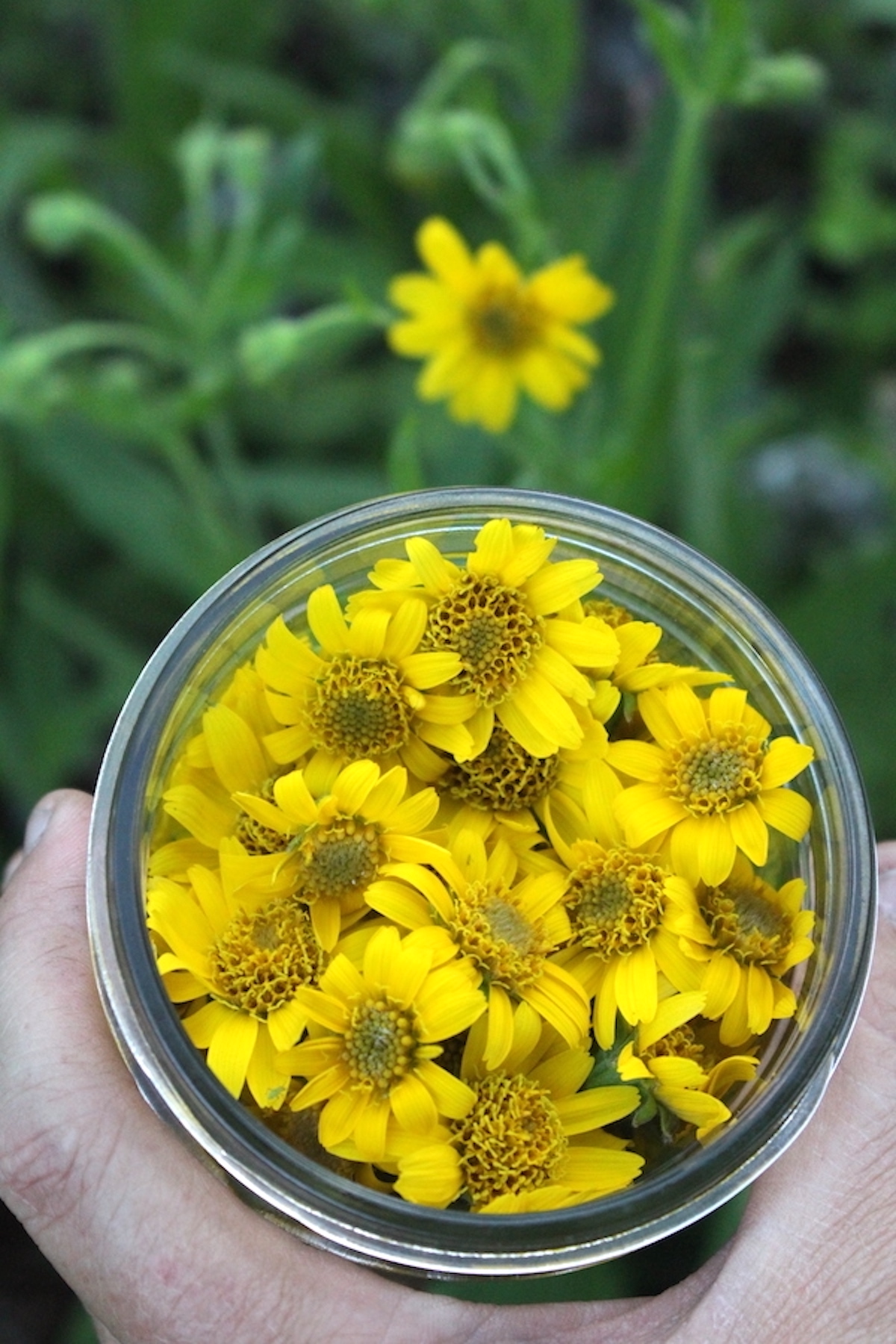
Once you have a jar packed with flowers, it’s time to add the neutral oil. As I mentioned above, you can use whatever neutral oil works well for your skin. I always have olive oil on hand, so that’s what I use for this recipe.
Now prepare a double boiler or your DIY double boiler set up by filling the bottom saucepan with about 1 inch of water. You can also use a slow cooker instead of a saucepan if that works better for you. Again, if you have chosen the DIY, ensure your mason jar or other heatproof container sits on a trivet, dish towel, or canning jar ring rather than directly on the bottom of the pan.
(If you don’t want to heat your oil, there are other methods, including cold infusion, which you can use with dried herbs.)
Slowly bring the water in your double boiler to 110 to 120°F, and then turn off the burner. Slow and gentle is essential when heating the oil. We want to infuse our neutral oil with arnica, not cook the arnica. If your oil and arnica get too hot, that can result in a less potent salve.
Over the next 24 to 48 hours, we want to keep that water between 110 and 120° as much as possible. Never want to leave the burner on for a prolonged period to minimize the risk of overheating the oil and herbs. Instead, turn the burner on to bring the water back up to temperature each time it begins to cool off before turning it off again.
I use the same strategy overnight. After I turn the burner off for the last time, I cover the double boiler in a towel or blanket to help it hold in the heat. Always monitor the water level in your double boiler, and never let it dry out. Add water as needed.
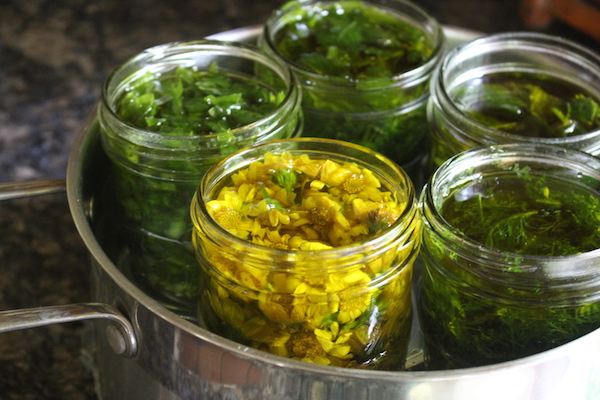
When you’re happy with your infusion, we can make the salve. First, strain the arnica flowers out of your infused oil and pour the oil back into your mason jar heatproof container or double boiler. Bring the water in the double boiler back to a simmer and add your beeswax. Stir the mixture constantly until the beeswax and oil are completely incorporated and smooth.
If you’re using the beeswax pellets but don’t have a kitchen scale, you can get a rough estimate with a tablespoon. One solid ounce of beeswax is roughly equivalent to a heaping tablespoon of beeswax pellets.
Your salve is finished! Carefully pour it into your jars or tins and let it set up for at least 30 minutes before using. I recommend labeling your containers with the salve name and date. It’s best to use your salves within one year. You can continue to use them after this, but they will lose some of their potency over time.
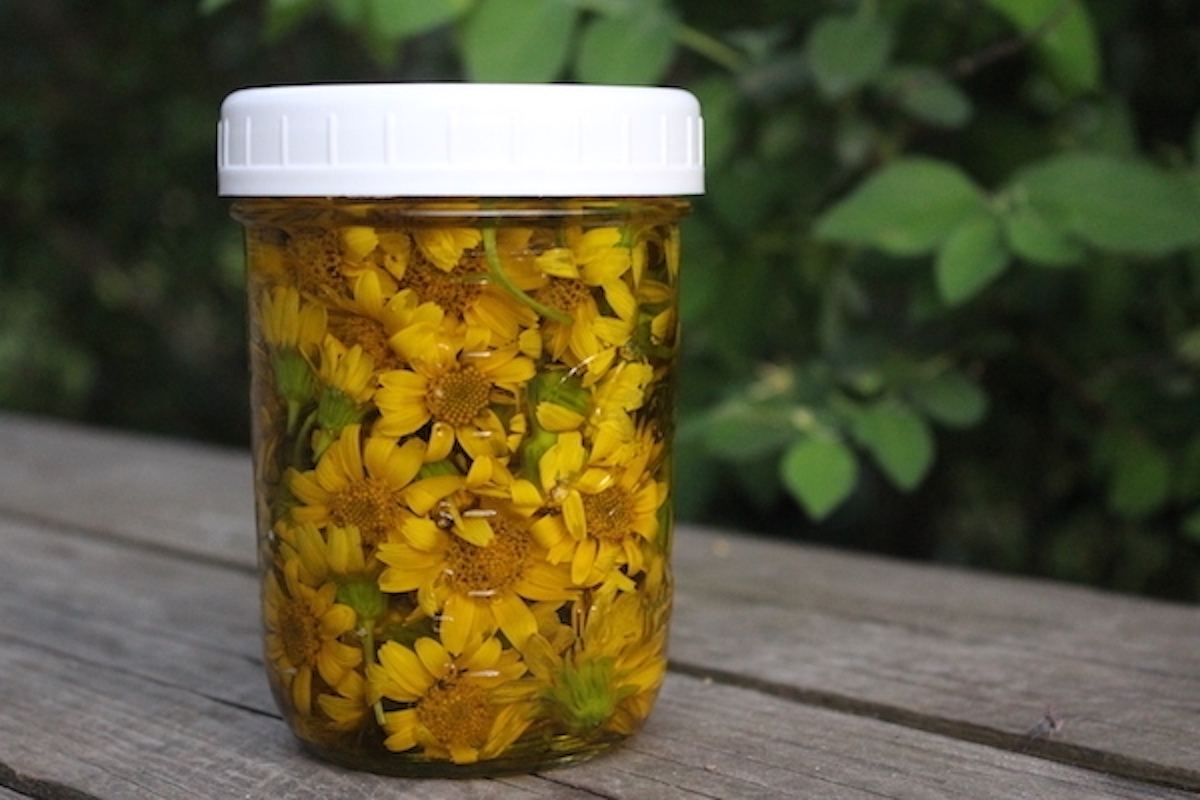
Ways to Use Arnica
Interested in other ways you can use arnica?
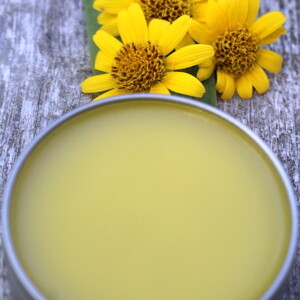
Arnica Salve
Equipment
Ingredients
Instructions
- Harvest and roughly break apart fresh arnica flowers before packing them firmly into a 1-pint mason jar.
- Cover the flowers with olive oil or the neutral oil of your choice.
- Fill your double boiler or double boiler DIY setup with 1 inch of water. Pour the arnica and oil into the top of the double boiler or set the mason jar into the DIY boiler setup on a trivet.
- Slowly heat the water in the boiler until it reaches 110 to 120°F. Turn off the heat.
- For the next 24 to 48 hours, monitor the water temperature, repeating step four to bring it back up to 110 to 120° each time it begins to cool off before turning it off again. Never leave the heat on for a prolonged time or allow the water to get too low.
- Once you’re satisfied with your infusion, strain the arnica flowers from the oil.
- Pour your clean infused oil back into your double boiler or heat-proof container. Bring the water in the boiler back to a simmer.
- Add your beeswax to the oil, stirring constantly until it’s completely incorporated and smooth.
- Pour your salve into small containers.
- Allow your salve to cool for at least 30 minutes before using, and label containers with the name and date.
Homemade Herbal Salve Recipes
Looking for more homemade herbal salve tutorials?
Disclaimer on Homemade Herbal Remedies
I am an experienced forager and home herbalist. For the past 20 years, I’ve been foraging for wild medicine and treating my family with herbal remedies. However, you should know that I am entirely self-taught. I am not a clinical herbalist. This article is based on my own research and experience using medicinal plants. I do not claim to have any experience or certifications that would allow me to advise you on your health. I provide this information as a reference to encourage a broader interest in herbal medicine and wild plants.
Please use this information as a starting point for your own research. Always verify herbal information with multiple sources.
Using any medicinal herb or herbal remedy can have unintended side effects or consequences. There are plenty of people who are allergic to gentle herbs like chamomile. Always talk to your doctor or a certified clinical herbalist before trying a new medicinal plant or remedy. Remedies can have surprising interactions with other medications, supplements, and herbs. They can also cause allergic reactions and adverse side effects even when used correctly.
If you want to continue your journey with herbal medicine, I suggest taking a course. Some of my favorite courses from the Herbal Academy of New England are now available online. Their Introduction to Herbal Medicine Course, and family herbalist group of courses are great places to start.
Additionally, I have taken their Mushroom Course, which covers both medicinal and edible mushrooms, and their Botany and Wildcrafting Course. Both were filled with a wealth of information while still being easy to understand and engaging.
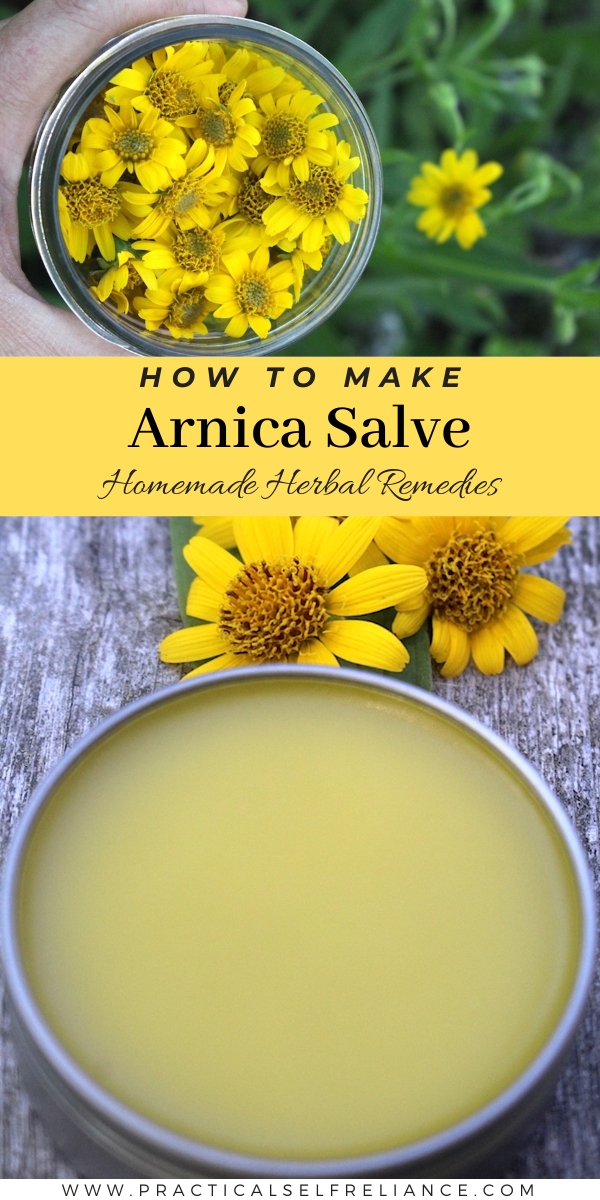
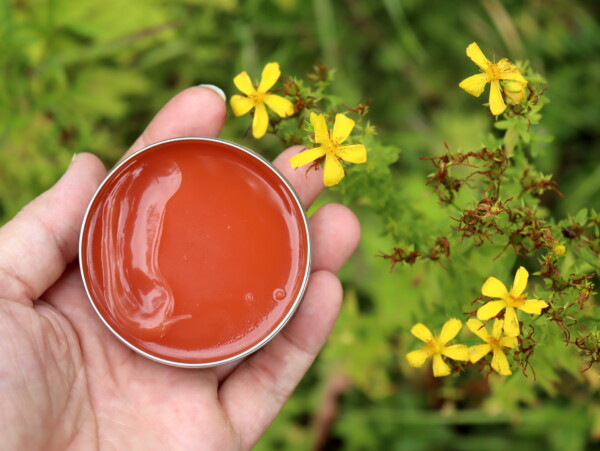
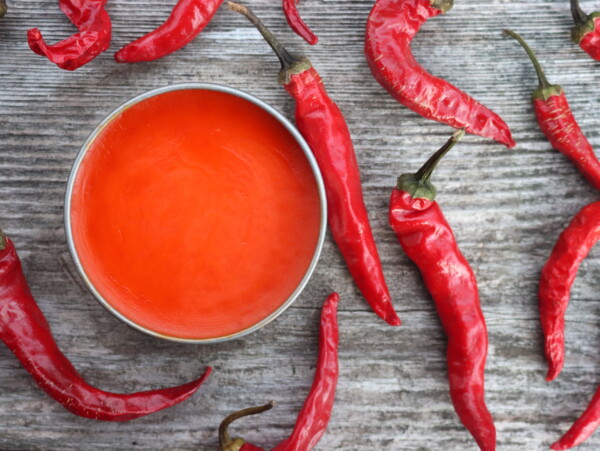
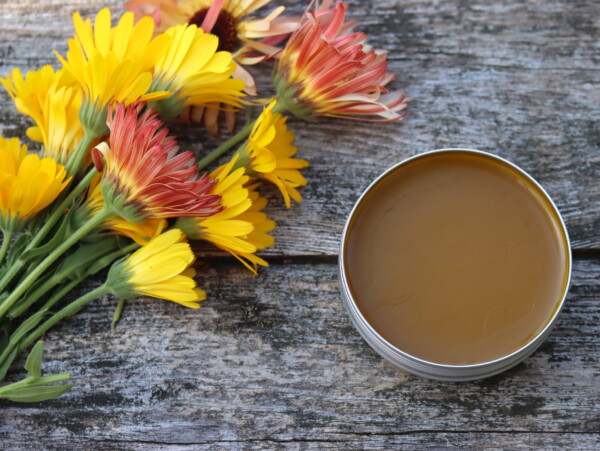
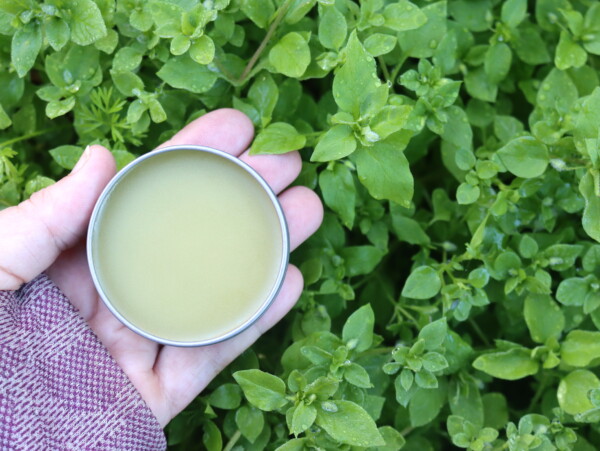










I use this one on low back pain and it works wonders.